COMPUTER SCIECE (868)
Aims (Conceptual)
(1) To understand algorithmic problem solving
using data abstractions, functional and
procedural abstractions, and object based and
object oriented abstractions.
(2) To understand: (a) how computers represent,
store and process data by studying the
architecture and machine language of a simple
microprocessor and the different levels of
abstraction that mediate between the machine
and the algorithmic problem solving level and
(b) how they communicate with the outside
world.
(3) To create awareness of ethical problems and
issues related to computing.
Aims (Skills)
To devise algorithmic solutions to problems and to
be able to code, validate, document, execute and
debug the solution using the Java programming
system.
CLASS XI
There will be two papers in the subject:
Paper I: Theory - 3 hours ….100 marks
Paper II: Practical - 3 hours ….100 marks
PAPER I -THEORY
Paper 1 shall be of 3 hours duration and be divided
into two parts.
Part I (30 marks): This part will consist of
compulsory short answer questions, testing
knowledge, application and skills relating to the entire
syllabus.
Part II (70 marks): This part will be divided into
three Sections, A, B and C. Candidates are required to
answer three questions out of four from Section A and
two questions out of three in each of the Sections B
and C. Each question in this part shall carry 10
marks.
SECTIO A
Basic Computer Hardware and Software
1. umbers
Representation of numbers in different bases and
interconversion between them (e.g. binary, octal,
decimal, hexadecimal). Addition and subtraction
operations for numbers in different bases.
Introduce the positional system of representing
numbers and the concept of a base. Discuss the
conversion of representations between different
bases using English or pseudo code. These
algorithms are also good examples for defining
different functions in a class modelling numbers
(when programming is discussed). For addition
and subtraction use the analogy with decimal
numbers, emphasize how carry works (this will be
useful later when binary adders are discussed).
2. Encodings
(a) Binary encodings for integers and real
numbers using a finite number of bits (signmagnitude,
twos complement, mantissaexponent
notation). Basic operations on
integers and floating point numbers.
Limitations of finite representations.
Signed, unsigned numbers, least and most
significant bits. Sign-magnitude
representation and its shortcomings (two
representations for 0, addition requires extra
step); twos-complement representation.
Operations (arithmetic, logical, shift), discuss
the basic algorithms used for the arithmetic
operations. Floating point representation:
normalized scientific notation, mantissaexponent
representation, binary point (discuss
trade-off between size of mantissa and
exponent). Single and double precision.
Arithmetic operations with floating point
numbers. Properties of finite representation:
overflow, underflow, lack of associativity
(demonstrate this through actual programs).
176
(b) Characters and their encodings (e.g. ASCII,
Unicode).
Discuss the limitations of the ASCII code in
representing characters of other languages.
Discuss the Unicode representation for the
local language. Java uses Unicode, so strings
in the local language can be used (they can
be displayed if fonts are available) – a simple
table lookup for local language equivalents
for Latin (i.e. English) character strings may
be done. More details on Unicode are
available at www.unicode.org.
3. High level structure of computer
Block diagram of a computer system with details
of (i) function of each block and
(ii) interconnectivity and data and control flow
between the various blocks.
Develop the diagram by successive refinement of
blocks till all the following have been covered:
ALU, RAM, cache, the buses (modern computers
have multiple buses), disk (disk controller and
what it does), input/output ports (serial, parallel,
USB, network, modem, line-in, line-out etc.),
devices that can be attached to these ports (e.g
keyboard, mouse, monitor, CDROM, DVD, audio
input/output devices, printer, etc.). Clearly
describe the connectivity and the flow of data and
control signals.
4. Basic architecture of typical simple processor
and its assembly language
(a) Basic architecture of the 8085
microprocessor. Instruction set, addresses,
addressing modes, simple machine language
programs using the different addressing
modes, execution of machine language
programs, input and output.
The idea here is to discuss a concrete
microprocessor instead of an abstract
computer thus giving students a clearer
understanding of how a typical computer
works. The aim is not to know all details of
the 8085 microprocessor. The basic features
that must be covered are: (i) Structure of
memory; (ii) registers - A-register
(accumulator), general (B, C, D, E, H, L in
8-bit individual and paired 16-bit modes),
program counter, stack pointer, flag;
(iii) addressing modes (immediate, direct,
register, register-indirect); (iv) Instruction set
(data transfer, arithmetic, logical, conditional
and transfer of control, input/output).
Interrupts are not included. Since many free
simulators are available, the students should
actually write, run and observe what happens
when a machine language program runs.
Example, machine and assembly language
programs: evaluating simple expressions,
adding a sequence of numbers, finding the
minimum and/or maximum of a sequence of
numbers, using finding the minimum /
maximum to do sorting of a sequence of
numbers. In particular, discuss how the stack
can be used for calling and returning from
subprograms. Emphasize how data and
program look alike and depend on the
interpretation used.
(b) Assembly language of 8085, simple assembly
language programs, assembly process and
assembler.
Discussion of the assembly language should
be done along with the instruction set
(previous section). Emphasize how it is easier
to program in assembly language than in
machine language. Assembly process: symbol
table and its use in translating a program to
machine language. Macros are not included.
5. Propositional logic, hardware implementation,
arithmetic operations
(a) Propositional logic, well formed formulae,
truth values and interpretation of well formed
formulae, truth tables.
Propositional variables; the common logical
connectives (~ (not), ∧ (and), ∨ (or),
⇒ (implication), (equivalence)); definition
of a well-formed formula (wff); representation
of simple word problems as wff (this can be
used for motivation); the values true and
false; interpretation of a wff; truth tables;
satisfiable, unsatisfiable and valid formulae.
(b) Logic and hardware, basic gates (AND, NOT,
OR) and their universality, other gates
(NAND, NOR, XOR); inverter, half adder,
full adder.
177
Show how the logic in (a) above can be
realized in hardware in the form of gates.
These gates can then be combined to
implement the basic operations for arithmetic.
Tie up with the arithmetic operations on
integers discussed earlier in 2 (a).
6. Memory
(a) Memory - construction of a memory bit using
a flip-flop, D-flip-flop and its use in
constructing registers.
(b) Memory organization and access; parity;
memory hierarchy - cache, primary memory,
secondary memory.
The access time differences between the
different kinds of memory; size differences;
locality of reference and cache memory.
7. System and other software
Boot process. Operating system as resource
manager, command processing, files, directories
and file system. Commonly available programs
(editors, compilers, interpreters, word processors,
spread sheets etc.).
Boot process step-by-step from power on till the
prompt. In OS discuss: (i) all the resources
(processor, memory, i/o) that need to be managed
in a computer; (ii) what is meant by managing
these resources. Logical structure of data storage
on disk using logical disks, hierarchical
directories and files. Distinguish between
interpreters and compilers. In particular discuss
the javac and java programs.
SECTIO B
The programming element in the syllabus is aimed at
algorithmic problem solving and not merely rote
learning of Java syntax. The Java version used should
be 1.5 or later. For programming, the students can use
any text editor and the javac and java programs or any
development environment: for example, BlueJ,
Eclipse, NetBeans etc. BlueJ is strongly recommended
for its simplicity, ease of use and because it is very
well suited for an ‘objects first’ approach.
8. Introduction to algorithmic problem solving
using Java
@ote that topics 9 to 13 will get introduced almost
simultaneously when classes and their definitions
are introduced.
9. Objects
(a) Objects as data (attributes) + behaviour
(methods or functions); object as an instance
of a class. Constructors.
Difference between object and class should be
made very clear. BlueJ (www.bluej.org) and
Greenfoot (www.greenfoot.org) can be used
for this purpose. Constructor as a special kind
of function; the new operator; multiple
constructors with different argument
structures; constructor returns a reference to
the object.
(b) Analysis of some real world programming
examples in terms of objects and classes.
Use simple examples like a calculator, date,
number etc. to illustrate how they can be
treated as objects that behave in certain welldefined
ways and how the interface provides a
way to access behaviour. Illustrate behaviour
changes by adding new functions, deleting old
functions or modifying existing functions.
10. Primitive values, wrapper classes, types and
casting
Primitive values and types: int, short, long, float,
double, boolean, char. Corresponding wrapper
classes for each primitive type. Class as type of
the object. Class as mechanism for user defined
types. Changing types through user defined
casting and automatic type coercion for some
primitive types.
Ideally, everything should be a class; primitive
types are defined for efficiency reasons; each
primitive type has a corresponding wrapper class.
Classes as user defined types. In some cases types
are changed by automatic coercion or casting –
e.g. mixed type expressions. However, casting in
general is not a good idea and should be avoided,
if possible.
178
11. Variables, expressions
Variables as names for values; expressions
(arithmetic and logical) and their evaluation
(operators, associativity, precedence). Assignment
operation; difference between left hand side and
right hand side of assignment.
Variables denote values; variables are already
defined as attributes in classes; variables have
types that constrain the values it can denote.
Difference between variables denoting primitive
values and object values – variables denoting
objects are references to those objects. The
assignment operator = is special. The variable on
the lhs of = denotes the memory location while the
same variable on the rhs denotes the contents of
the location e.g. i=i+2.
12. Statements, scope
Statements; conditional (if, if-then-else, switchbreak,
?: ternary operator), looping (for, while-do,
do-while, continue, break); grouping statements in
blocks, scope and visibility of variables.
Describe the semantics of the conditional and
looping statements in detail. Evaluation of the
condition in conditional statements (esp.
difference between || and | and && and &).
Emphasize fall through in switch statement. Many
small examples should be done to illustrate
control structures. Printing different kinds of
patterns for looping is instructive. When number
of iterations are known in advance use the for
loop otherwise the while-do or do-while loop.
Express one loop construct using the others. For
e.g.:
for (
to:
(i) Using while
(ii) Using do-while
@esting of blocks. Variables with block scope,
function scope, class scope. Visibility rules when
variables with the same name are defined in
different scopes.
13. Functions
Functions/methods (as abstractions for complex
user defined operations on objects), functions as
mechanisms for side effects; formal arguments
and actual arguments in functions; different
behaviour of primitive and object arguments.
Static functions and variables. The this variable.
Examples of algorithmic problem solving using
functions (various number theoretic problems,
finding roots of algebraic equations).
Functions are like complex operations where the
object is implicitly the first argument. Variable
this denotes the current object. Functions
typically return values, they may also cause sideeffects
(e.g. change attribute values of objects) –
typically functions that are only supposed to cause
side-effects return void (e.g. Set functions). Java
passes argument by value. Illustrate the difference
between primitive values and object values as
arguments (changes made inside functions persist
after the call for object values). Static definitions
as class variables and class functions visible and
shared by all instances. @eed for static functions
and variables. Introduce the main method –
needed to begin execution.
14. Arrays, strings
(a) Structured data types – arrays (single and
multi-dimensional), strings. Example
algorithms that use structured data types (e.g.
searching, finding maximum/minimum,
sorting, solving systems of linear equations,
substring, concatenation, length, access to
char in string, etc.).
Storing many data elements of the same type
requires structured data types – like arrays.
Access in arrays is constant time and does not
depend on the number of elements. Structured
data types can be defined by classes – String.
Introduce the Java library String class and
the basic operations on strings (accessing
individual characters, various substring
operations, concatenation, replacement, index
of operations).
(b) Basic concept of a virtual machine; Java
virtual machine; compilation and execution of
Java programs (the javac and java programs).
179
The JVM is a machine but built as a program
and not through hardware. Therefore it is
called a virtual machine. To run, JVM
machine language programs require an
interpreter (the java program). The advantage
is that such JVM machine language programs
(.class files) are portable and can run on any
machine that has the java program.
(c) Compile time and run time errors; basic
concept of an exception, the Exception class,
catch and throw.
Differentiate between compile time and run
time errors. Run time errors crash the
program. Recovery is possible by the use of
exceptions. Explain how an exception object
is created and passed up until a matching
catch is found. This behaviour is different
from the one where a value is returned by a
deeply nested function call. It is enough to
discuss the Exception class. Sub-classes of
Exception can be discussed after inheritance
has been done in Class XII.
SECTIO C
15. Elementary data structures and associated
algorithms, basic input/ouput
(a) Class as a contract; separating implementation
from interface; encapsulation; private and
public.
Class is the basic reusable unit. Its function
prototypes (i.e. the interface) work as a visible
contract with the outside world since others
will use these functions in their programs.
This leads to encapsulation (i.e. hiding
implementation information) which in turn
leads to the use of private and public for
realizing encapsulation.
(b) Interfaces in Java; implementing interfaces
through a class; interfaces for user defined
implementation of behaviour.
Motivation for interface: often when creating
reusable classes some parts of the exact
implementation can only be provided by the
final end user. For example in a class that
sorts records of different types the exact
comparison operation can only be provided
by the end user. Since only he/she knows
which field(s) will be used for doing the
comparison and whether sorting should be in
ascending or descending order be given by
the user of the class.
Emphasize the difference between the Java
language construct interface and the word
interface often used to describe the set of
function prototypes of a class.
(c) Basic data structures (stack, queue, dequeue);
implementation directly through classes;
definition through an interface and multiple
implementations by implementing the
interface. Basic algorithms using the above
data structures.
A data structure is a data collection with well
defined operations and behaviour or
properties. The behaviour or properties can
usually be expressed formally using equations
or some kind of logical formulae. Consider
for e.g. a stack with operations defined as
follows:
void push(Object o)
Object pop()
boolean isEmpty()
Object top()
Then, for example the LIFO property can be
expressed by (assume s is a stack):
if s.push(o); o1=pop() then o N o1
What the rule says is: if o is pushed on the
stack s and then it is popped and o1 is the
object obtained then o, o1 are identical.
Another useful property is:
if s.isEmpty() == true then s.pop() = ERROR
It says that popping an empty stack gives
ERROR.
Similarly, several other properties can also be
specified. It is important to emphasize the
behavioural rules or properties of a data
structure since any implementation must
guarantee that the rules hold.
Some simple algorithms that use the data
structures:
i) For stack: parentheses matching, tower of
Hanoi, nested function calls; solving a
maze.
ii) For queue: scheduling processes, printers,
jobs in a machine shop.
180
(d) Basic input/output using Scanner and Printer
classes from JDK; files and their
representation using the File class, file
input/output; input/output exceptions. Tokens
in an input stream, concept of whitespace,
extracting tokens from an input stream
(StringTokenizer class).
The Scanner class can be used for input of
various types of data (e.g. int, float, char etc.)
from the standard input stream or a file input
stream. The File class is used model file
objects in the underlying system in an OS
independent manner. Similarly, the Printer
class handles output. Only basic input and
output using these classes should be covered.
Discuss the concept of a token (a delimited
continuous stream of characters that is
meaningful in the application program – e.g.
words in a sentence where the delimiter is the
blank character). This naturally leads to the
idea of delimiters and in particular
whitespace and user defined characters as
delimiters. As an example show how the
StringTokenizer class allows one to extract a
sequence of tokens from a string with user
defined delimiters.
(e) Concept of recursion, simple recursive
functions (e.g. factorial, GCD, binary search,
conversion of representations of numbers
between different bases).
Many problems can be solved very elegantly
by observing that the solution can be
composed of solutions to ‘smaller’ versions of
the same problem with the base version
having a known simple solution. Recursion
can be initially motivated by using recursive
equations to define certain functions. These
definitions are fairly obvious and are easy to
understand. The definitions can be directly
converted to a program. Emphasize that any
recursion must have a base case. Otherwise,
the computation can go into an infinite loop.
Illustrate this by removing the base case and
running the program. Examples:
(i) Definition of factorial:
factorial(0) = 1 //base case
factorial(n) = n * factorial(n-1)
(ii) Definition of GCD:
gcd(m, n) =
if (m==n) then n //base case
else if (m>n) then gcd(m-n, n)
else gcd(m, n-m)
(iii) Definition of Fibonacci numbers:
fib(0) = 1 //base case
fib(1) = 1 //base case
fib(n) = fib(n-1)+ fib(n-2)
The tower of Hanoi is a very good example of
how recursion gives a very simple and elegant
solution where as non-recursive solutions are
quite complex. Discuss the use of a stack to
keep track of function calls. The stack can
also be used to solve the tower of Hanoi
problem non-recursively.
(f) Concrete computational complexity; concept
of input size; estimating complexity in terms
of functions; importance of dominant term;
best, average and worst case.
Points to be given particular emphasis:
(i) Algorithms are usually compared along
two dimensions – amount of space (that is
memory) used and the time taken. Of the
two the time taken is usually considered
the more important. The motivation to
study time complexity is to compare
different algorithms and use the one that is
the most efficient in a particular situation.
(ii) Actual run time on a particular computer
is not a good basis for comparison since it
depends heavily on the speed of the
computer, the total amount of RAM in the
computer, the OS running on the system
and the quality of the compiler used. So
we need a more abstract way to compare
the time complexity of algorithms.
(iii) This is done by trying to approximate the
number of operations done by each
algorithm as a function of the size of the
input. In most programs the loops are
important in deciding the complexity. For
example in bubble sort there are two
nested loops and in the worst case the time
181
taken will be proportional to n(n-1) where
n is the number of elements to be sorted.
Similarly, in linear search in the worst
case the target has to be compared with
all the elements so time taken will be
proportional to n where n is the number of
elements in the search set.
(iv) In most algorithms the actual complexity
for a particular input can vary. For
example in search the number of
comparisons can vary from 1 to n. This
means we need to study the best, worst
and average cases. Comparisons are
usually made taking the worst case.
Average cases are harder to estimate
since it depends on how the data is
distributed. For example in search, if the
elements are uniformly distributed it will
take on the average n/2 comparisons when
the average is taken over a statistically
significant number of instances.
(v) Comparisons are normally made for large
values of the input size. This means that
the dominant term in the function is the
important term. For example if we are
looking at bubble sort and see that time
taken can be estimated as: a*n2 +b*n + c
where n is the number of elements to be
sorted and a, b, c are constants then for
large n the dominant term is clearly n2 and
we can in effect ignore the other two
terms.
16. Implementation of algorithms to solve
problems
The students are required to do lab assignments in
the computer lab concurrently with the lectures.
Programming assignments should be done such
that each major topic is covered in at least one
assignment. Assignment problems should be
designed so that they are non-trivial and make the
student do algorithm design, address correctness
issues, implement and execute the algorithm in
Java and debug where necessary.
Self explanatory.
17. Social context of computing and ethical issues
(a) Intellectual property and corresponding laws
and rights, software as intellectual property.
(b) Software copyright and patents and the
difference between the two; trademarks;
software licensing and piracy.
(c) Free software foundation and its position on
software, open source software, various types
of licensing (e.g. GPL, BSD).
(d) Privacy, email etiquette, spam, security issues,
phising.
Social impact and ethical issues should be
discussed and debated in class. The important
thing is for students to realise that these are
complex issues and there are multiple points of
view on many of them and there is no single
‘correct’ or ‘right’ view.
PAPER II - PRACTICAL
This paper of three hours duration will be evaluated
internally by the school.
The paper shall consist of three programming
problems from which a candidate has to attempt any
one. The practical consists of the two parts:
(1) Planning Session
(2) Examination Session
The total time to be spent on the Planning session and
the Examination session is three hours. After
completing the Planning session the candidates may
begin with the Examination session. A maximum of
90 minutes is permitted for the Planning session.
However, if the candidates finish earlier, they are to
be permitted to begin with the Examination session.
Planning Session
The candidates will be required to prepare an
algorithm and a hand written Java program to solve
the problem.
182
Examination Session
The program handed in at the end of the Planning
session shall be returned to the candidates. The
candidates will be required to key-in and execute the
Java program on seen and unseen inputs individually
on the Computer and show execution to the examiner.
A printout of the program listing, including output
results should be attached to the answer script
containing the algorithm and handwritten program.
This should be returned to the examiner. The program
should be sufficiently documented so that the
algorithm, representation and development process is
clear from reading the program. Large differences
between the planned program and the printout will
result in loss of marks.
Teachers should maintain a record of all the
assignments done as part of the practical work through
the year and give it due credit at the time of
cumulative evaluation at the end of the year. Students
are expected to do a minimum of twenty assignments
for the year.
Marks (out of a total of 100) should be distributed as
given below:
Continuous Evaluation
Candidates will be required to submit a work file
containing the practical work related to programming
assignments done during the year.
Programming assignments done throughout the year
(Internal evaluation) - 20 marks
Terminal Evaluation
Solution to programming problem on the computer
- 60 marks
(Marks should be given for choice of algorithm and
implementation strategy, documentation, correct output
on known inputs mentioned in the question paper,
correct output for unknown inputs available only to the
examiner.)
Viva-voce - 20 marks
(Viva-voce includes questions on the following aspects
of the problem attempted by the student: the algorithm
and implementation strategy, documentation,
correctness, alternative algorithms or implementations.
Questions should be confined largely to the problem
the student has attempted).
183
CLASS XII
There will be two papers in the subject:
Paper I: Theory- 3 hours …100 marks
Paper II: Practical- 3 hours …100 marks
PAPER I-THEORY
Paper 1 shall be of 3 hours duration and be divided
into two parts.
Part I (30 marks): This part will consist of
compulsory short answer questions, testing
knowledge, application and skills relating to the entire
syllabus.
Part II (70 marks): This part will be divided into
three Sections, A, B and C. Candidates are required to
answer three questions out of four from Section A and
two questions out of three in each of the Sections B
and C. Each question in this part shall carry 10
marks.
SECTIO A
1. Boolean Algebra
(a) Propositional logic, well formed formulae,
truth values and interpretation of well formed
formulae (wff), truth tables, satisfiable,
unsatisfiable and valid formulae. Equivalence
laws and their use in simplifying wffs.
Propositional variables; the common logical
connectives (~ (not), ∧ (and), ∨ (or), ⇒
(implication), ⇔ (biconditional); definition of
a well-formed formula (wff); representation of
simple word problems as wff (this can be used
for motivation); the values true and false;
interpretation of a wff; truth tables;
satisfiable, unsatisfiable and valid formulae.
Equivalence laws: commutativity of ∧, ∨ ;
associativity of ∧, ∨; distributivity; de
Morgan’s laws; law of implication (p ⇒ q N
~p ∨ q); law of biconditional ((p ⇔ q) N
(p ⇒ q) ∧ (q ⇒ p)); identity (p N p); law of
negation (~ (~p) N p); law of excluded middle
(p ∨~p N true); law of contradiction(p∧~p N
false); simplification rules for ∧, ∨ .
p ∨ p N p p ∧ p N p
p ∨ true N true p ∧ true N p
p ∨ false N p p ∧ false N false
p ∨ (p ∧ q) N p p ∧ (p ∨ q) N p
The equivalence rules can be used to simplify
propositional wffs, for example:
1) (p ⇒ q) ∧ (p ⇒ r) to p ⇒ (q ∧ r)
2) ((p ⇒ q) ∧ p) ⇒ q to true
etc.
(b) Binary valued quantities; basic postulates of
Boolean algebra; operations AND, OR and
NOT; truth tables.
(c) Basic theorems of Boolean algebra (e.g.
Duality, idempotence, commutativity,
associativity, distributivity, operations with 0
and 1, complements, absorption, involution);
De Morgan’s theorem and its applications;
reducing Boolean expressions to sum of
products and product of sums forms;
Karnaugh maps (up to four variables).
Verify the laws of boolean algebra using truth
tables. Inputs, outputs for circuits like half and
full adders, majority circuit etc., SOP
representation; reduction using Karnaugh maps
and boolean algebra.
2. Computer Hardware
(a) Elementary logic gates (NOT, AND, OR,
NAND, NOR, XOR, XNOR) and their use in
circuits.
(b) Applications of Boolean algebra and logic
gates to half adders, full adders, encoders,
decoders, multiplexers, NAND, NOR as
universal gates.
Show the correspondence between boolean
functions and the corresponding switching
circuits or gates. Show that @A@D and @OR gates
184
are universal by converting some circuits to
purely @A@D or @OR gates.
SECTIO B
The programming element in the syllabus (Sections B
and C) is aimed at algorithmic problem solving and
not merely rote learning of Java syntax. The Java
version used should be 1.5 or later. For programming,
the students can use any text editor and the javac and
java programs or any development environment: for
example, BlueJ, Eclipse, NetBeans etc. BlueJ is
strongly recommended for its simplicity, ease of use
and because it is very well suited for an ‘objects first’
approach.
3. Programming in Java (Review of Class XI
Sections B and C)
@ote that items 4 to 8 will get introduced almost
simultaneously when classes and their definitions
are introduced.
4. Objects
(a) Objects as data (attributes) + behaviour
(methods or functions); object as an instance
of a class. Constructors.
Difference between object and class should be
made very clear. BlueJ (www.bluej.org) and
Greenfoot (www.greenfoot.org) can be
profitably used for this purpose. Constructor
as a special kind of function; the new
operator; multiple constructors with different
argument structures; constructor returns a
reference to the object.
(b) Analysis of some real world programming
examples in terms of objects and classes.
Use simple examples like a calculator, date,
number, etc. to illustrate how they can be
treated as objects that behave in certain welldefined
ways and how the interface provides a
way to access behaviour. Illustrate behaviour
changes by adding new functions, deleting old
functions or modifying existing functions.
5. Primitive values, wrapper classes, types and
casting
Primitive values and types: int, short, long, float,
double, boolean, char. Corresponding wrapper
classes for each primitive type. Class as type of
the object. Class as mechanism for user defined
types. Changing types through user defined
casting and automatic type coercion for some
primitive types.
Ideally, everything should be a class; primitive
types are defined for efficiency reasons; each
primitive type has a corresponding wrapper class.
Classes as user defined types. In some cases types
are changed by automatic coercion or casting –
e.g. mixed type expressions. However, casting in
general is not a good idea and should be avoided,
if possible.
6. Variables, expressions
Variables as names for values; expressions
(arithmetic and logical) and their evaluation
(operators, associativity, precedence). Assignment
operation; difference between left hand side and
right hand side of assignment.
Variables denote values; variables are already
defined as attributes in classes; variables have
types that constrain the values it can denote.
Difference between variables denoting primitive
values and object values – variables denoting
objects are references to those objects. The
assignment operator = is special. The variable on
the lhs of = denotes the memory location while the
same variable on the rhs denotes the contents of
the location e.g. i=i+2.
7. Statements, scope
Statements; conditional (if, if-then-else, switchbreak,
?: ternary operator), looping (for, while-do,
do-while, continue, break); grouping statements in
blocks, scope and visibility of variables.
Describe the semantics of the conditional and
looping statements in detail. Evaluation of the
condition in conditional statements (esp.
difference between || and | and && and &).
Emphasize fall through in switch statement. Many
small examples should be done to illustrate
control structures. Printing different kinds of
patterns for looping is instructive. When number
of iterations are known in advance use the for
loop otherwise the while-do or do-while loop.
Express one loop construct using the others. For
e.g.:
for (
to:
Using while
185
Using do-while
Nesting of blocks. Variables with block scope,
function scope, class scope. Visibility rules when
variables with the same name are defined in
different scopes.
8. Functions
Functions/methods (as abstractions for complex
user defined operations on objects), functions as
mechanisms for side effects; formal arguments
and actual arguments in functions; different
behaviour of primitive and object arguments.
Static functions and variables. The this variable.
Examples of algorithmic problem solving using
functions (various number theoretic problems,
finding roots of algebraic equations).
Functions are like complex operations where the
object is implicitly the first argument. Variable
this denotes the current object. Functions
typically return values, they may also cause sideeffects
(e.g. change attribute values of objects) –
typically functions that are only supposed to cause
side-effects return void (e.g. Set functions). Java
passes argument by value. Illustrate the difference
between primitive values and object values as
arguments (changes made inside functions persist
after the call for object values). Static definitions
as class variables and class functions visible and
shared by all instances. @eed for static functions
and variables. Introduce the main method –
needed to begin execution.
9. Arrays, strings
(a) Structured data types – arrays (single and
multi-dimensional), strings. Example
algorithms that use structured data types (e.g.
searching, finding maximum/minimum,
sorting, solving systems of linear equations,
substring, concatenation, length, access to
char in string, etc.).
Storing many data elements of the same type
requires structured data types – like arrays.
Access in arrays is constant time and does not
depend on the number of elements. Structured
data types can be defined by classes – String.
Introduce the Java library String class and
the basic operations on strings (accessing
individual characters, various substring
operations, concatenation, replacement, index
of operations). The Class StringBuffer should
be introduced for those applications that
involve heavy manipulation of strings.
(b) Basic concept of a virtual machine; Java
virtual machine; compilation and execution of
Java programs (the javac and java programs).
The JVM is a machine but built as a program
and not through hardware. Therefore it is
called a virtual machine. To run, JVM
machine language programs require an
interpreter (the java program). The advantage
is that such JVM machine language programs
(.class files) are portable and can run on any
machine that has the java program.
(c) Compile time and run time errors; basic
concept of an exception, the Exception class,
catch and throw.
Differentiate between compile time and run
time errors. Run time errors crash the
program. Recovery is possible by the use of
exceptions. Explain how an exception object
is created and passed up until a matching
catch is found. This behaviour is different
from the one where a value is returned by a
deeply nested function call. It is enough to
discuss the Exception class. Sub-classes of
Exception can be discussed after inheritance
has been done in Class XII.
(d) Class as a contract; separating implementation
from interface; encapsulation; private and
public.
Class is the basic reusable unit. Its function
prototypes (i.e. the interface) work as a visible
contract with the outside world since others
will use these functions in their programs.
This leads to encapsulation (i.e. hiding
implementation information) which in turn
leads to the use of private and public for
realizing encapsulation.
(e) Interfaces in Java; implementing interfaces
through a class; interfaces for user defined
implementation of behaviour.
186
Motivation for interface: often when creating
reusable classes, some parts of the exact
implementation can only be provided by the
final end user. For example, in a class that
sorts records of different types the exact
comparison operation can only be provided
by the end user. Since only he/she knows
which field(s) will be used for doing the
comparison and whether sorting should be in
ascending or descending order be given by
the user of the class.
Emphasize the difference between the Java
language construct interface and the word
interface often used to describe the set of
function prototypes of a class.
(f) Basic input/output using Scanner and Printer
classes from JDK; files and their
representation using the File class, file
input/output; input/output exceptions. Tokens
in an input stream, concept of whitespace,
extracting tokens from an input stream
(StringTokenizer class).
The Scanner class can be used for input of
various types of data (e.g. int, float, char etc.)
from the standard input stream or a file input
stream. The File class is used model file
objects in the underlying system in an OS
independent manner. Similarly, the Printer
class handles output. Only basic input and
output using these classes should be covered.
Discuss the concept of a token (a delimited
continuous stream of characters that is
meaningful in the application program – e.g.
words in a sentence where the delimiter is the
blank character). This naturally leads to the
idea of delimiters and in particular
whitespace and user defined characters as
delimiters. As an example show how the
StringTokenizer class allows one to extract a
sequence of tokens from a string with user
defined delimiters.
(g) Concept of recursion, simple recursive
functions (e.g. factorial, GCD, binary search,
conversion of representations of numbers
between different bases).
Many problems can be solved very elegantly
by observing that the solution can be
composed of solutions to ‘smaller’ versions of
the same problem with the base version
having a known simple solution. Recursion
can be initially motivated by using recursive
equations to define certain functions. These
definitions are fairly obvious and are easy to
understand. The definitions can be directly
converted to a program. Emphasize that any
recursion must have a base case. Otherwise,
the computation can go into an infinite loop.
Illustrate this by removing the base case and
running the program. Examples:
(i) Definition of factorial:
factorial(0) = 1 //base case
factorial(n) = n * factorial(n-1)
(ii) Definition of GCD:
gcd(m, n) =
if (m==n) then n //base case
else if (m>n) then gcd(m-n, n)
else gcd(m, n-m)
(iii) Definition of Fibonacci numbers:
fib(0) = 1 //base case
fib(1) = 1 //base case
fib(n) = fib(n-1)+ fib(n-2)
The tower of Hanoi is a very good example of
how recursion gives a very simple and elegant
solution where as non-recursive solutions are
quite complex. Discuss the use of a stack to
keep track of function calls. A stack can also
be used to solve the tower of Hanoi problem
non-recursively.
SECTIO C
Inheritance, polymorphism, data structures,
computational complexity
10. Inheritance and polymorphism
Inheritance; base and derived classes; member
access in derived classes; redefinition of variables
and functions in subclasses; abstract classes; class
Object; protected visibility. Subclass
polymorphism and dynamic binding.
Emphasize the following:
- inheritance as a mechanism to reuse a class
by extending it.
187
- inheritance should not normally be used just
to reuse some functions defined in a class but
only when there is a genuine specialization
(or subclass) relationship between objects of
the base class and that of the derived class.
- Allows one to implement operations at the
highest relevant level of abstraction.
- Freezes the interface in the form of abstract
classes with abstract functions that can be
extended by the concrete implementing
classes. For example, an abstract class Shape
can have an abstract function draw that is
implemented differently in the sub-classes like
Circle, Quadrilateral etc.
- how the exact function call at run time
depends on the type of the object referenced
by the variable. This gives sub-class
polymorphism. For example in the code
fragment:
Shape s1=new Circle(), s2=new
Quadrilateral();
s1.draw(); //the draw is the draw in Circle
s2.draw(); //the draw is the draw in
Quadrilateral
the two draw function invocations on s1, s2
invoke different draw functions depending on
the type of objects referenced by s1 and s2
respectively.
11. Data structures
(a) Basic data structures (stack, queue, dequeue);
implementation directly through classes;
definition through an interface and multiple
implementations by implementing the
interface. Basic algorithms using the above
data structures.
A data structure is a data collection with well
defined operations and behaviour or
properties. The behaviour or properties can
usually be expressed formally using equations
or some kind of logical formulae. Consider
for e.g. a stack with operations defined as
follows:
void push(Object o)
Object pop()
boolean isEmpty()
Object top()
Then, for example the LIFO property can be
expressed by (assume s is a stack):
if s.push(o); o1=pop() then o N o1
What the rule says is: if o is pushed on the
stack s and then it is popped and o1 is the
object obtained then o, o1 are identical.
Another useful property is:
if s.isEmpty() == true then s.pop() = ERROR
It says that popping an empty stack gives
ERROR.
Similarly, several other properties can also be
specified. It is important to emphasize the
behavioural rules or properties of a data
structure since any implementation must
guarantee that the rules hold.
Some simple algorithms that use the data
structures:
(i) For stack: parentheses matching, tower of
Hanoi, nested function calls; solving a
maze.
(ii) For queue: scheduling processes,
printers, jobs in a machine shop.
(b) Recursive data structures: singly and doubly
linked lists, binary trees, tree traversals,
binary search tree. Algorithms using these
data structures (merge sort and quick sort,
searching).
Data structures should be defined as abstract
data types with a well defined interface (it is
instructive to define them using the Java
interface construct) – see the comments in (a)
above. Emphasize that algorithms for
recursive data structures are themselves
recursive and that algorithms are usually the
simplest and most elegant. The following
should be covered for each data structure:
Lists: insertion, deletion, reversal, appending
two lists, extracting an element or a sublist,
checking emptiness. Searching, sorting (by
quicksort and mergesort algorithms), binary
search in a sorted list.
Binary trees: apart from the definition the
following concepts should be covered:
external and internal nodes, height,
188
completeness, balancing, Traversals
(pre, post and in-order). Implementation
using arrays and linked structures.
Binary search tree: insertion, deletion,
search.
12. Complexity and big O notation
Concrete computational complexity; concept of
input size; estimating complexity in terms of
functions; importance of dominant term; best,
average and worst case. Big O notation for
computational complexity; analysis of complexity
of example algorithms using the big O notation
(e.g. Various searching and sorting algorithms,
algorithm for solution of linear equations etc.).
Points to be given particular emphasis:
(i) Algorithms are usually compared along two
dimensions – amount of space (that is
memory) used and the time taken. Of the two
the time taken is usually considered the more
important. The motivation to study time
complexity is to compare different algorithms
and use the one that is the most efficient in a
particular situation.
(ii) Actual run time on a particular computer is
not a good basis for comparison since it
depends heavily on the speed of the computer,
the total amount of RAM in the computer, the
OS running on the system and the quality of
the compiler used. So we need a more
abstract way to compare the time complexity
of algorithms.
(iii) This is done by trying to approximate the
number of operations done by each algorithm
as a function of the size of the input. In most
programs the loops are important in deciding
the complexity. For example in bubble sort
there are two nested loops and in the worst
case the time taken will be proportional to
n(n-1) where n is the number of elements to be
sorted. Similarly, in linear search in the worst
case the target has to be compared with all
the elements so time taken will be
proportional to n where n is the number of
elements in the search set.
(iv) In most algorithms the actual complexity for a
particular input can vary. For example in
search the number of comparisons can vary
from 1 to n. This means we need to study the
best, worst and average cases. Comparisons
are usually made taking the worst case.
Average cases are harder to estimate since it
depends on how the data is distributed. For
example in search, if the elements are
uniformly distributed it will take on the
average n/2 comparisons when the average is
taken over a statistically significant number of
instances.
(v) Comparisons are normally made for large
values of the input size. This means that the
dominant term in the function is the important
term. For example if we are looking at bubble
sort and see that time taken can be estimated
as: a*n2 +b*n + c where n is the number of
elements to be sorted and a, b, c are constants
then for large n the dominant term is clearly
n2 and we can, in effect, ignore the other two
terms.
All the above motivates the big O notation. Let
f(n), g(n) be positive functions, then f(n) is said to
be O(g(n)) if there exists constants c, n0 such that
f(x)U c*g(n) whenever n>n0. What this means is
that g(n) asymptotically dominates f(n).
Expressing time complexity using the big O
notation gives us an abstract basis for comparison
and frees us from bothering about constants. So
the estimated time complexity a*n2+b*n+c is
O(n2).
Analyse the big O complexity of the algorithms
pertaining to the data structures in 11 (a) and (b)
above.
13. Implementation of algorithms to solve
problems
The students are required to do lab assignments in
the computer lab concurrently with the lectures.
Programming assignments should be done such
that each major topic is covered in at least one
assignment. Assignment problems should be
designed so that they are non-trivial and make the
student do algorithm design, address correctness
issues, implement and execute the algorithm in
Java and debug where necessary.
Self explanatory.
189
PAPER II - PRACTICAL
This paper of three hours duration will be evaluated
by the Visiting Examiner appointed locally and
approved by the Council.
The paper shall consist of three programming
problems from which a candidate has to attempt any
one. The practical consists of the two parts:
1. Planning Session
2. Examination Session
The total time to be spent on the Planning session and
the Examination session is three hours. After
completing the Planning session the candidates may
begin with the Examination session. A maximum of
90 minutes is permitted for the Planning session.
However, if the candidates finish earlier, they are to
be permitted to begin with the Examination session.
Planning Session
The candidates will be required to prepare an
algorithm and a hand written Java program to solve
the problem.
Examination Session
The program handed in at the end of the Planning
session shall be returned to the candidates. The
candidates will be required to key-in and execute the
Java program on seen and unseen inputs individually
on the Computer and show execution to the Visiting
Examiner. A printout of the program listing including
output results should be attached to the answer script
containing the algorithm and handwritten program.
This should be returned to the examiner. The program
should be sufficiently documented so that the
algorithm, representation and development process is
clear from reading the program. Large differences
between the planned program and the printout will
result in loss of marks.
Teachers should maintain a record of all the
assignments done as part of the practical work through
the year and give it due credit at the time of
cumulative evaluation at the end of the year. Students
are expected to do a minimum of twenty assignments
for the year.
Marks (out of a total of 100) should be distributed as
given below:
Continuous Evaluation
Candidates will be required to submit a work file
containing the practical work related to programming
assignments done during the year.
Programming assignments done throughout the year
(Internal evaluation) - 10 marks
Programming assignments done throughout the year
(Visiting Examiner) - 10 marks
Terminal Evaluation
Solution to programming problem on the computer
- 60 marks
(Marks should be given for choice of algorithm and
implementation strategy, documentation, correct output
on known inputs mentioned in the question paper,
correct output for unknown inputs available only to the
examiner.)
Viva-voce - 20 marks
(Viva-voce includes questions on the following
aspects of the problem attempted by the student: the
algorithm and implementation strategy,
documentation, correctness, alternative algorithms or
implementations. Questions should be confined
largely to the problem the student has attempted).
OTE:
Algorithm should be expressed clearly using any
standard scheme such as a pseudo code.
EQUIPMET
There should be enough computers to provide for a
teaching schedule where at least three-fourths of the
time available is used for programming.
Schools should have equipment/platforms such that all
the software required for practical work runs properly,
i.e. it should run at acceptable speeds.
Since hardware and software evolve and change very
rapidly, the schools may have to upgrade them as
required. Following are the recommended
specifications as of now:
190
The Facilities:
• A lecture cum demonstration room with a
MULTIMEDIA PROJECTOR/ an LCD and
O.H.P. attached to the computer.
• A white board with white board markers should
be available.
• A fully equipped Computer Laboratory that
allows one computer per student.
• Internet connection for accessing the World Wide
Web and email facility.
• The computers should have a minimum of 256
MB (512MB preferred) RAM and a PIII or higher
processor. The basic requirement is that it should
run the operating system and Java programming
system (Java compiler, Java runtime environment,
Java development environment) at acceptable
speeds.
• Good Quality printers.
Software:
• Any suitable Operating System can be used.
• JDK 1.5 or later.
• Documentation for the JDK version being used.
• A suitable text editor. A development
environment with a debugger is preferred (e.g.
BlueJ, Eclipse, NetBeans). BlueJ is recommended
for its ease of use and simplicity.

